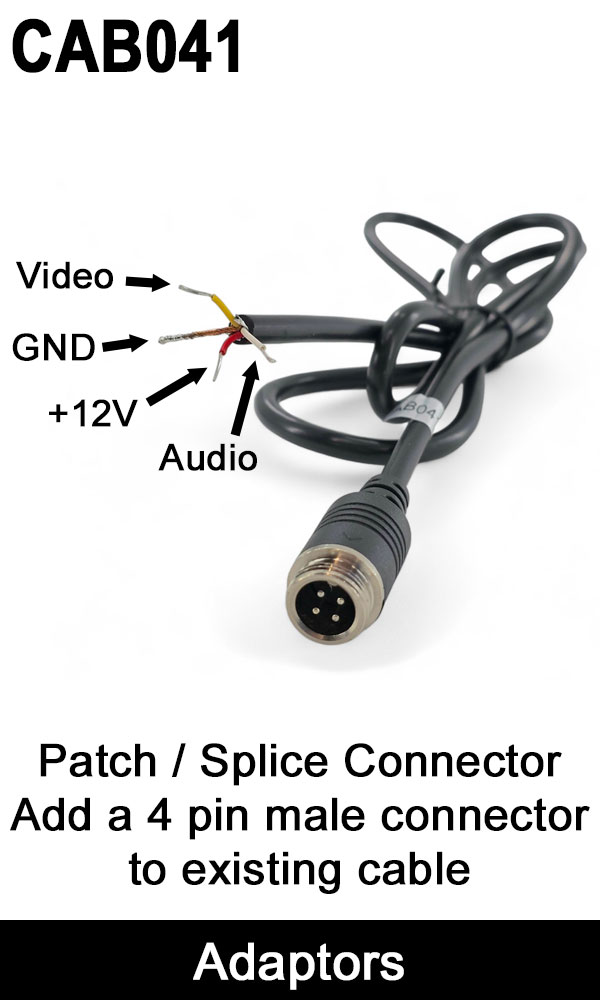CAB041 - 4 Pin Male to bare wires - For soldering on to existing leads
Description
| We very often get people who have an older system that has unusual connectors that wish to adapt their existing wiring to the industry standard - 4 pin aviation connector. In the past, our customers used to purchase a 1M cable, which they would cut in half to connect each wire to their existing lead. We decided to get our cable factory to make us a new 100cm length lead which has been pre-separated out to the individual wires. The red wire is for +12V power. The twisted copper braiding is the earth - if your old video signal cable has twisted braiding around it this can be twisted together and soldered to this wire. The white wire is for audio - most cameras don't have a microphone so this can be left unconnected in most cases. The yellow wire is for video signal. Instructions for adding this lead in to your existing wiringIf you don’t have a conventional plug and play connector then you will need to upgrade your connector to the more modern style used in cameras like ours. Tools you will need:
Warning 1 : Never cut the wires to the new camera as this may allow atmospheric moisture to enter down the cable and wire colours will be different to advice on this page. Warning 2 : Never cut the extension cable whilst there is power to the camera system as this may cause a short. Method:
|




